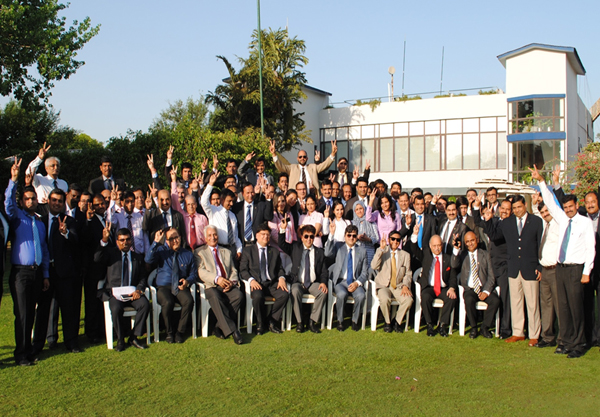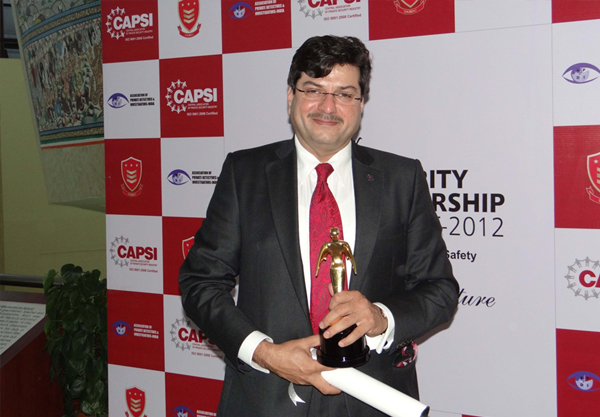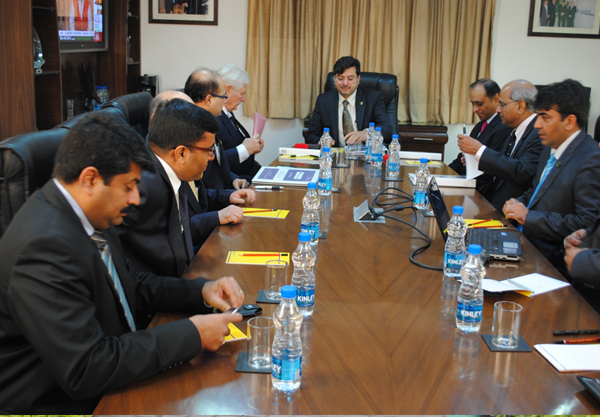Risk Management in a Dynamic Society
A proactive approach is thus proposed to risk management. Instead of a strategy based on attempts to remove causes of human error, an attempt is made to design a strategy based on: – An identification of the boundaries of safe performance, efforts to make these boundaries visible to decision makers and – Efforts to counteract pressures that drive decision-makers toward the boundaries. Since most serious accidents have been caused by operation of hazardous system outside the design envelope, the basic problem in design of improved risk management strategies is to ensure an improved interaction among the decision making and planning strategies at the various levels shown in figure. However, a scheme for improved interaction cannot be created by integration of research results from the various disciplines studying the individual levels ,due to the basic differences in conceptual reference frames, research paradigms, and language of representation. In consequence, results from present academic research must be reinterpreted and often supplemented by analysis based on a model suited to capture the function of the entire system aiming at proper control of the normal as well as disturbed operation of the potentially hazardous processes of a particular company. Considering the dynamic nature of a modern society with companies and institutions constantly striving to adapt to a dynamic environment, the usual approach to modeling the system by decomposing it into elements and describing its function by causal interaction among these elements is not reliable. Causal explanations cannot be used for systems that include closed loop interactions and adaptive changes. Instead, models in terms of functional abstraction are required, describing the information flow structure within the entire system involved in the control of the hazardous processes. This approach can be used to design and analyze reliably a system, even when its functional elements are subject to unpredictable changes. There is a basic difference between the requirements to design and analysis of; – systems controlled by pre-planned strategies and prescriptive procedures and – systems controlled by closed-loop feedback strategies.
Approach for pro-active safety measures is given below in figure



FM Cost Benchmarking
Many FMs are often seeking benchmarking data to measure how their organization is performing. When asked about what they want to learn, they often will reply that a table or chart showing their performance compared to others what they want.
If it were only as easy as that! Usually, once an FM is provided a chart, the next question becomes something like, “Do you have that broken down for just: industry type older facilities in my city that operate two shifts cleaned with union labor cleaned one time per week with around 1500 employees etc. ?”
What is really happening here is that the FM is realizing that general numbers may be a good starting point, but to really make informed decisions a more detailed breakdown by criteria that affect operating costs is necessary. That is the only way one can compare the benchmarked facility to one that is best-in-class.
We define that “breakdown” as using a set of filters. Each of the FM questions above becomes a filter:
- Industry type
- Age of the facility
- City or region
- Hours of operation
- Union or non-union labor
- Number of employees
In actuality, there are nearly 50 potentially useful filters for looking at maintenance metrics, and more that are germane to other operating costs, such as utilities, janitorial, security, landscaping, etc.
For FMs there isn’t any single table that contains all the critical data needed for a detailed benchmarking analysis. For maintenance, there may be 30-40 critical dimensions that could be applied and the importance probably varies by the situation. For example, most FMs would probably expect higher costs at an older facility. But if you have recently replaced many of the key systems and are gaining the benefits from an extensive upgrade, age would not be a significant factor.
The conclusion, then, is that the filter set for any one building will likely be different from the one for any other building, so there is no standard table that can work for everyone. Furthermore, it is likely that the filter set for studying maintenance may very well be different than the one for studying janitorial, utilities or any other aspect of a facility.
Benchmarking of operating costs has always been popular among FMs, as these are what the FM can both measure and control. More than 95 percent of operational expenses are incurred by:
- Utilities
- Maintenance
- Janitorial
- Security
Some of the leading benefits of benchmarking are:
- Reduce costs.
- Identify best practices.
- Add value to your facilities.
- Support business case for change.
- Identify strengths and weaknesses.
- Justify costs and practices.
- Conduct trend analysis.
Office Safety and Hygiene
All workplace environments need to be hygienic and safe for employees and visitors, even those which aren’t involved in the production and handling of food and personal products. In public areas such as the front office or reception, the hygiene requirement is essential as it is exposed to milieu. Germs are easily spread throughout office environments. Because you’re with several people in close quarters, it’s no wonder how quickly colds and flu can spread throughout the office. In order to keep healthy, observe proper hygiene in the office. Health hazards are often present in places where you’d least expect it.
Research conducted by the University of Arizona states that office desks have 400 times more bacteria than a toilet seat. Cleaning of desk periodically with antibacterial sprays. Use antibacterial wipes daily on your desk surface, computer keyboard and handset of the phone. Do not store food in your desk and avoid eating at your desk. It is essential to provide safe and clean environment to employees
Office Safety
- Keep desk and file drawers closed when not in use.
- Do not open file or desk drawers above or behind someone without warning them.
- Use only step stools and ladders (do not climb on counters or chairs).
- Push chairs up to desk or under counter when not in use.
- Do not carry loads, which obstruct your view, which are too heavy or without a prepared place to set them down.
- Get help to move heavy objects.
- Approach blind areas cautiously.
- Know location of emergency exits and keep aisles clear to them.
- Assure all electrical equipment is disconnected before working on it.
Hygiene Management
Aside from the accident prevention benefits, good housekeeping contributes to efficient performance. When tools, equipment and materials are returned to the proper place after use, they are easier to find and inspect for damage and wear. The following suggestions are offered for good housekeeping
- Wipe up spills and pick up all objects that should not be on floor.
- Keep work areas and storage facilities clean, neat and orderly.
- All aisles, stairways, exits and access ways should be kept clear.
- Do not place supplies on top of lockers, boxes or other movable containers at a height not visible from the floor.
- When piling materials for storage, make sure the base is level and firm.
- Lay extension cords and hoses in such a way as to minimize tripping or obstructions to traffic.
- Sharp or pointed objects should be stored to prevent persons from coming in contact with them.
- All packing material should be disposed of immediately.
 Peregrine Guarding completed 20 years on the 13th of March 2015. It’s a momentous journey for an organization that started modestly in 1995. This remarkable journey from inception to market leader position was possible because of more than 1800 satisfied clients and 40,000 + thriving work force.
Peregrine Guarding completed 20 years on the 13th of March 2015. It’s a momentous journey for an organization that started modestly in 1995. This remarkable journey from inception to market leader position was possible because of more than 1800 satisfied clients and 40,000 + thriving work force.




